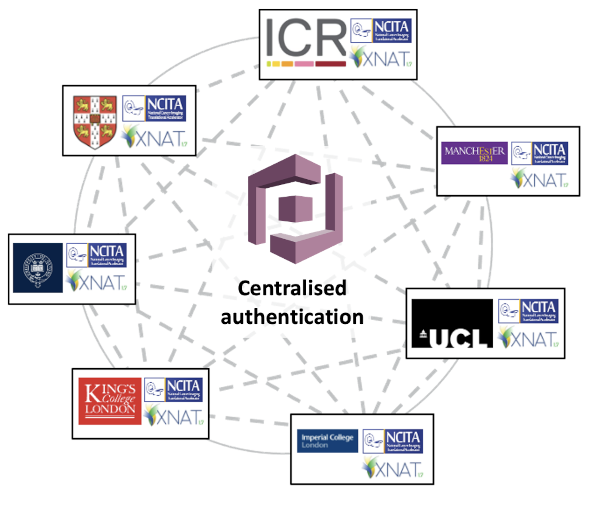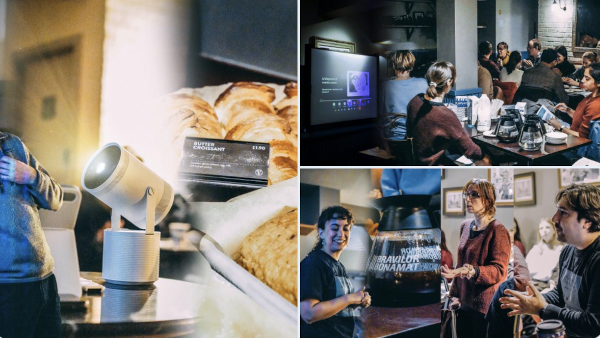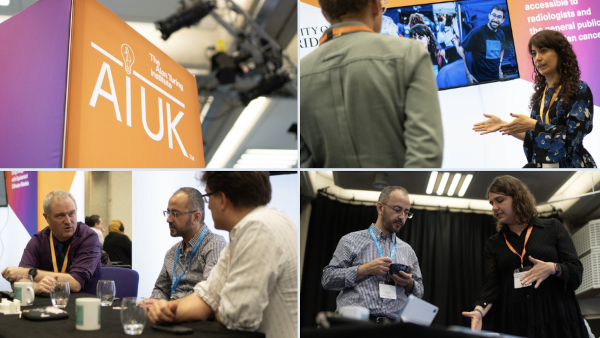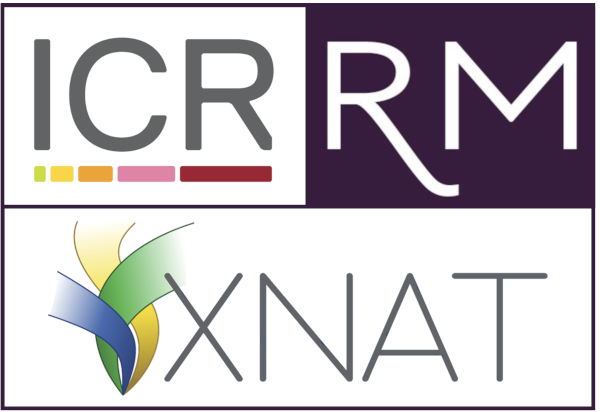Our technology: vision and strategy
In 2020, as part of the work of the NCITA Repository Unit, a vision statement was created that summarises the aspirations of our XNAT programme: create and sustain a state-of-the art national repository of cancer imaging data that provides infrastructure and tools for biomarker discovery, development and validation and that will lead to precision oncology. As shown in the diagram above, XNAT sits at the centre of the imaging study lifecycle and can contribute at every stage. The modern concept of a Repository is far more than simply a “shopping trolley” from which images can be downloaded.
To deliver this vision, a programme was put in place with the following up 8 work packages:
WP1 Applications technology: We have taken advantage of ICR’s leading position as the creator of the XNAT integration of the zero-footprint OHIF web viewer in order to develop state-of-the-art tools for visualising data in multicentre studies. Successes so far have been: (i) the implementation of flexible ROI delineation tools, with the results stored in industry-standard, machine-readable formats ready and stored back in the Repository, ready for downstream applications to access them programmatically; (ii) AI-assisted image annotation for segmentation; (iii) advanced 4-D image display options; (iv) a web-based viewer for digital pathology. We have also developed containerised “shrink-wrapped” processing pipelines to facilitate data analysis and, in particular for calculation of quantitative imaging biomarkers.

WP2 XNAT federation: There are understandable reasons (for example information governance, cybersecurity and intellectual property concerns) why individual institutions may wish to domicile within their own jurisdictions (i.e., on their own servers) any imaging data that they generate . This mitigates against a single national-scale research archive, thus making it hard to create subject cohorts that combine data from multiple institutions.
NCITA came up with an innovative solution to this issue. By creating “Repository nodes” that are managed independently at each institution , but with a common SOP framework and a technical solution for linking the databases, institutions retain complete control of their own data and can take advantage of local infrastructure. During the initial phase of NCITA funding, much progress was made towards this goal, with well-established Repository Unit nodes at ICR, Cambridge, Manchester, Imperial and UCL, and we developed a unique XNAT federation concept based on the OpenID standard, with a common centralised authentication. This allowed a single researcher to search simultaneously across multiple XNATs. For our first test system, we investigated AWS Cognito and demonstrated the validity of this idea.
WP3 Improving service delivery to users: Over the five years, significant work has been performed on the underlying infrastructure of the NCITA XNAT platforms. Nowhere is this more true than at ICR/RM, where we have rapidly developed a critical mass of expertise surrounding how to run a Repository service. Since 2021, there has been a transformation of our digital estate in both the Institute and the Royal Marsden Hospital, refreshing our physical servers and relocating them to the ICR’s secure area at the Jisc Shared Data Centre (managed by Virtus) in Slough, whilst at the same time working with the RM to install XNAT in its Azure cloud tenancy. We have worked extremely hard to develop both our user-onboarding methods and our capabilities in image deidenfication. This has enabled us to run many multicentre trials with large number of collaborating institutions.
WP4 FAIR data access: Over the coming years, the ability to make our data Findable, Accessible, Interoperable and Reusable will be key to developing informatics workflows. Systematic incorporation of more study-level metadata into all studies will improve findability, while the technical work we are doing will enable interoperability and reusability. We are working closely with the ICR and RM information governance teams to examine our procedures for access to both clinical trial data, where patients have given informed consent for onward research use of their data, and “real-world” data, for which the NHS is moving towards the use of Trusted Research Environments (TRE) or Secure Data Environments (SDE).
WP5 Compliance: In parallel with our technology upgrade, we have gradually been improving all the administrative procedures of the RM/ICR Repository. This has included the introduction of data audits, a redesign of our training procedures and creation of a generalised Data Protection Impact Assessment (DPIA). Our cloud-based hospital installations in the RM have been taken through the entire process of high- and low-level design documentation. We have undertaken a project to perform security hardening of our XNAT servers to the CIS-Ubuntu Level 1 and these have undergone (and passed!) penetration testing.
WP6 Sustainability: We are working towards making the Repository sustainable financially. Our goal is to be able to maintain core staff to deliver Business As Usual services to academic users for fees that are significantly less than those of a typical medical Contract Research Organisation (CRO), whilst continuing to operate our research activities via funded projects.
WP7 Outreach and education: The NCITA Repository Unit Team has been extremely active in both outreach and education. Lorena Escudero Sanchez, Repository Team member in Cambridge has been instrumental in organising a number of public events, for example “coffee and AI” and an excellent display at the Turing Institute’s 2023 AI-UK Conference. Simon Doran was a key member of the small planning team that organised the highly successful 2021 and 2022 XNAT workshops. And the whole Repository Team pulled together in a significant effort to put together a video training course for the XNAT viewer. Register for free with the XNAT Academy and be sure to choose the OHIF viewer v3 (not v2!) course.




